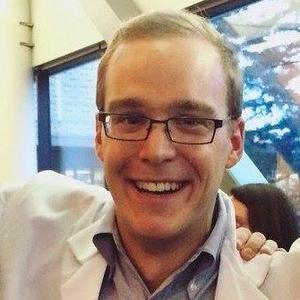ESP Biography
CHRIS STOCK, Stanford PhD student in neuroscience
|
Major: Neuroscience College/Employer: Stanford Year of Graduation: 2020 |

|
Brief Biographical Sketch:
Not Available. Past Classes(Clicking a class title will bring you to the course's section of the corresponding course catalog)M4908: Intelligent Systems in Biology and Engineering in Splash Spring 2016 (Apr. 09 - 10, 2016)
Evolution designed a remarkably intelligent machine: the human brain. In turn, we humans have attempted to engineer intelligent systems of our own, in the form of computers and the algorithms we run on them. In this class, we will think about layers of abstraction in the brain and compare them to their counterparts in human-built systems. Along the way, we'll try to define intelligence, learn about the tradeoffs human brains have to make during problem solving, and see why it's wrong to say that deep learning "works just like the brain."
M4918: How to Think with Bayesian Statistics in Splash Spring 2016 (Apr. 09 - 10, 2016)
How should I update my beliefs when I observe new information? How can I account for uncertainty when I’m making a prediction? And once I make that prediction, how confident in it should I be? Bayesian statistics, a pillar of modern machine learning and data science, gives a principled framework for answering these questions. In this class, we will learn how to encode our beliefs about the world in probabilistic mathematical models, use these models to analyze datasets, and see why Bayesian statistics is employed in domains from science to the private sector. And, with high probability, this class will help you apply Bayesian reasoning to situations in everyday life!
B4938: Chaos and Randomness in the Brain in Splash Spring 2016 (Apr. 09 - 10, 2016)
The brain is a tangle of interconnected neurons constantly communicating with one another via electrical and chemical signals. To the interested neuroscientist, some of these signals are easy to predict; for example, cones in the retina respond reliably to the wavelength of light hitting them. Yet in much of the brain, predicting what makes a neuron fire is a tricky task indeed. Why might an animal benefit from having unpredictable neural activity, and how might the brain generate such unpredictability? It turns out the answer involves not just animal behavior, neuronal biophysics and brain circuits, but also the mathematical theories of chaotic dynamics, graphs, and statistical learning. In this class, we will run breathlessly through these topics and more, with an emphasis on the fundamental connections between biology and mathematics that give rise to even the most commonplace of animal behaviors.
V5024: Music of the Medieval Mediterranean in Splash Spring 2016 (Apr. 09 - 10, 2016)
Gregorian chant, troubadours, and choir music: Remarkably, these "greatest hits" of the medieval period are still commonly known today, a thousand years after their time. Yet such long-lasting artistic achievements encompass just a fraction of the rich musical soundscape of the medieval Mediterranean, where religious, political, and linguistic influences shaped diverse and interwoven traditions. In this course, we will trek from the Byzantine Empire (Turkey and Greece) to the Langue d'Oc (France) and Al-Andalus (Spain); from the numerous forms of early chant to songs of Sufi Islamic worship and of courtly love. This class will have plenty of listening to and discussing music -- if you want to apply a critical eye to topics diverse as history, geography, and religion through the lens of music, come join us!
|
|
